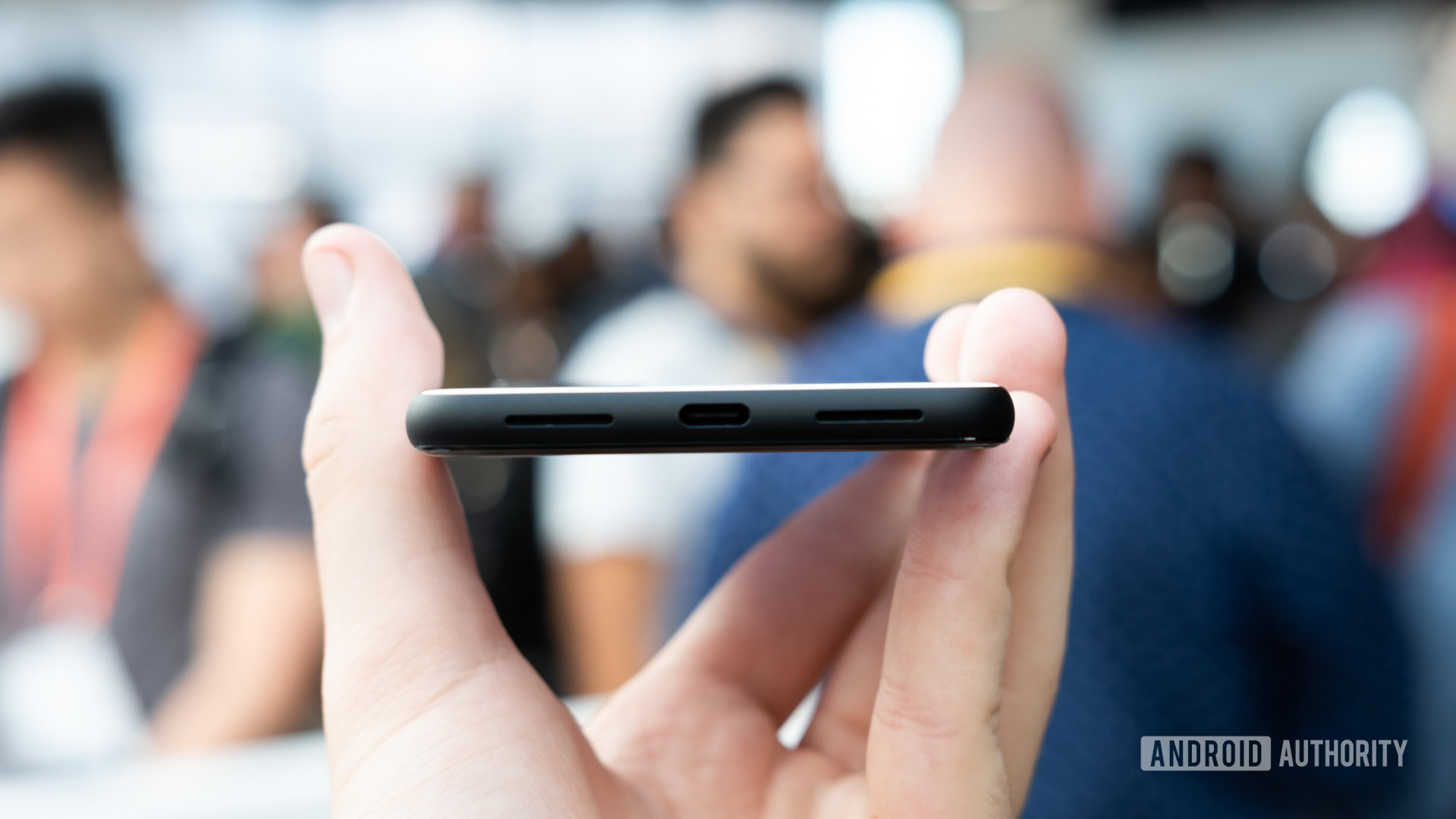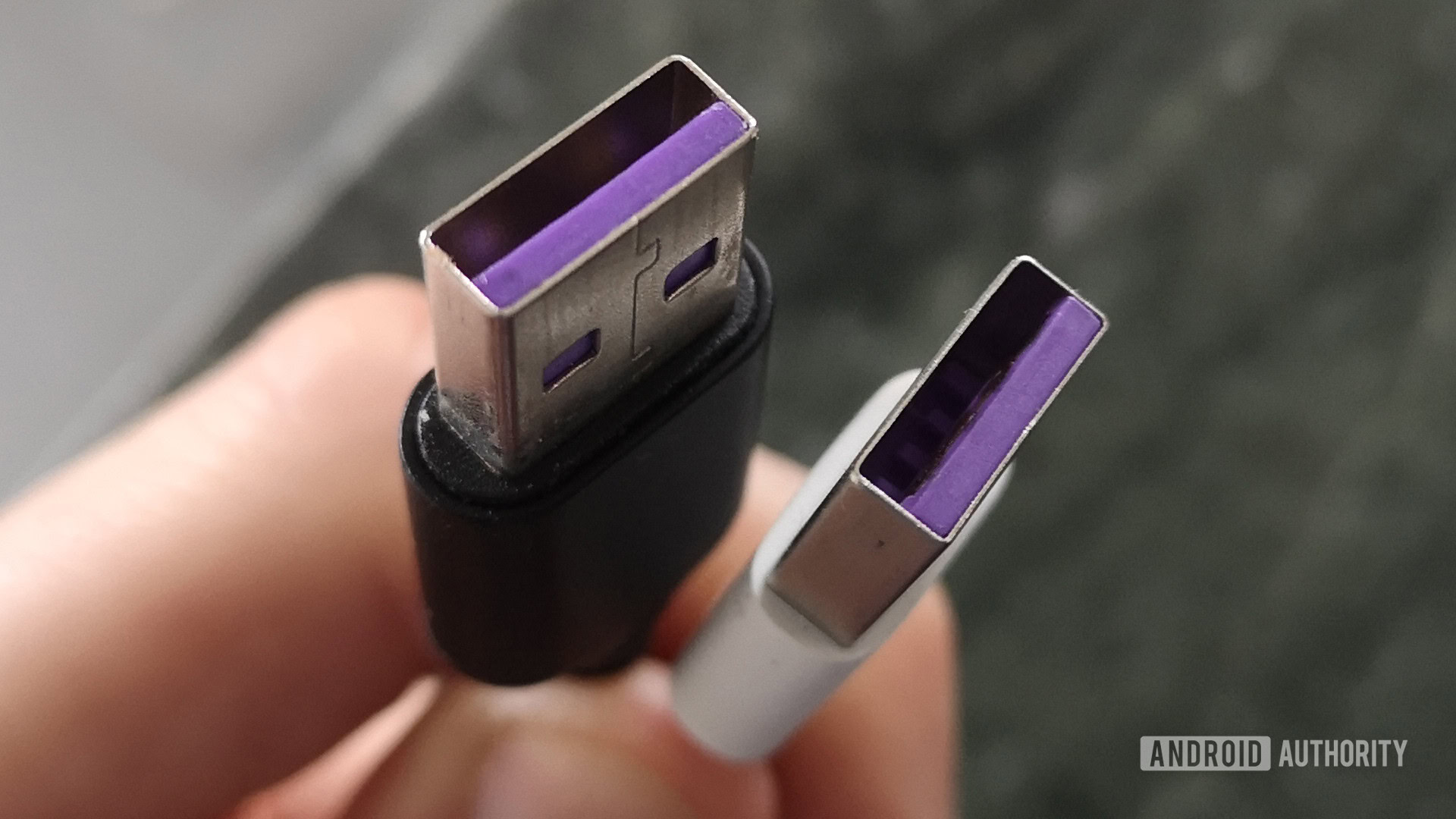Affiliate links on Android Authority may earn us a commission. Learn more.
Google Pixel 4 doesn't work with some USB cables (Update: Google responds)
Published onJanuary 10, 2020

Update, 10th January 2020: Google has responded after looking into the matter internally. The company confirms that the lack of charging and data via offending cables is intentional behavior with the Google Pixel 4. It is caused by cables that do not follow the official USB-C specification.
According to a Google spokesperson, “Pixel 4 is compatible with all chargers and cables that comply with the USB Type-C Cable and Connector Specification”. Reading between the lines, cables that break official USB-C specifications are disabled from working with the Pixel 4. Google is making good on its promise to stamp out questionable USB-C cables and chargers.
While the cables I tested appear to work just fine with other phones and haven’t caused any damage, Google clearly isn’t taking any chances with the out of spec USB-C cables out there.
Original, 15th December 2019: The Google Pixel 4 has turned out to be a bit of a contentious handset. While it has its share of cutting edge ideas, there’s already quite a list of things to dislike about the phone. Battery capacity tops the list of gripes and to make matters worse you can’t just reach for any charger around to top up. The Pixel 4 doesn’t seem to play nicely with certain USB cables, so you’d better pack accordingly.
We have several Pixel 4 floating around the Android Authority team and we’ve all noticed this problem when attempting to charge the phone with the countless third-party adapters and cables we have lying around.
To investigate exactly what works and what doesn’t, we grabbed our USB-C ammeter, a bunch of chargers and cables, and got to work measuring.
Another reason why: It’s 2019 and USB-C is still a mess
The Pixel 4 doesn’t like some USB devices
Google’s Pixel series relies on USB Power Delivery (PD) as the primary charging technology. This is the technology you’ll find on Google’s chargers. It works wonderfully, clocking in at around 15W. The Pixel 4 charges just fine with other chargers that support USB Power Delivery over USB-C to USB-C connectors, including older Pixel chargers and third-party USB PD products.
So, USB-C to USB-C works just fine. However, I simply couldn’t get the Pixel 4 to charge with other USB-A chargers at first. Quick Charge ports, USB BC 1.2 power banks, and even standard USB ports on my PC and laptop wouldn’t work. It was only when swapping out to another cable that I was able to get the Pixel 4 to connect to these devices. However, every other phone I tested, including the Google Pixel 3 and Pixel 3a, works just fine with this same cable.
The Pixel 4 is the first phone I've seen that refuses to connect or charge at all with some cables.
As a side note, you won’t get fast charging speeds from the Pixel 4 when plugging into a Quick Charge or USB BC 1.2 2.4A port. Charging power is capped at just 7W from these accessories, as is the case with the Pixel 3 and 3a as well.
Usually, if a cable doesn’t support enough power for a particular charging standard, it falls back to the default USB charging speeds of 2.5W or attempts to negotiate something more suitable. Other phones do exactly this when connecting to other chargers or when using sub-optimal cables. To investigate further, I ran through a selection of different USB cables to try and narrow down the problem.

After testing 18 different cables, it’s not entirely clear what upsets the Pixel 4. Newer HUAWEI 5A cables were the only smartphone cables that refused to work. The original cable that kickstarted this investigation is also a 5A cable designed to work with fast charging devices. Both sport a purple identifying color inside. However, these work fine with every other phone I tested. Interestingly, high current cables from OnePlus and OPPO were deemed acceptable by the Pixel 4.
It's not just charging, these cables don't work for data transfers either.
There’s nothing glaringly obvious about these cables that would cause a problem. They otherwise work fine, even with older Google handsets, and aren’t from cheap or unknown manufacturers. There must be something going on with some high-current cables that Google has recently taken issue with.
It’s not just charging cables
I don’t have a ton of USB-C accessories, but I thought I’d check out whether or not the situation was limited to just cables. Unfortunately, the Pixel 4 dislikes third-party USB-C to 3.5mm adapters just as much as its predecessors. While the Pixel 3 audio adapter works with the Pixel 4, versions from OnePlus and HUAWEI that I had at hand don’t. That’s irritating, considering Google no longer includes an adapter in the box.
Some third-party USB-C to 3.5mm adapters still aren't supported. And Google no longer includes one in the box.
Likewise, the Pixel 4 and its older Pixel 3 sibling wouldn’t connect to my USB-C HDMI dongle. However, this works just fine with Samsung and Huawei devices. Although to be fair, few phones support HDMI screen mirroring these days and it’s a very minor feature.
Regardless, Google is clearly stricter than most about what it does and doesn’t support over a Pixel’s USB-C connector.
Why is the Pixel 4 so picky?

Google has become increasingly tough on charging protocols this year. As well as its own products, Google is attempting to dictate stricter charging terms on its Android partners as well. Google wants all Android devices to support USB-PD and to stop bending or breaking the standard’s rules to allow for faster-charging speeds.
In addition, it’s worth remembering that Google Engineer Benson Leung spent a lot of time testing and reviewing questionable USB cables as far back as 2015. It’s quite possible that Google is clamping down on cables and chargers that break with official USB specs, resulting in what we’ve observed with the Pixel 4.
Could Google be clamping down on out of spec cables?
What we do know is that some USB-C to USB-A cables didn’t (and perhaps still don’t) provide the correct 56kΩ pull-up resistor used to correctly identify legacy devices. Google may now be blocking charging with cables that don’t conform to this specification. That would be a handy safety feature, although I have never had any issues with these cables I’ve been using for years.
While most third-party cables work just fine with the Pixel 4, there’s clearly a subset of existing cables that don’t. If you want to ensure your Pixel 4 works with your power bank and other charging accessories, your best bet is to grab Google’s official USB-C to USB-A cable.